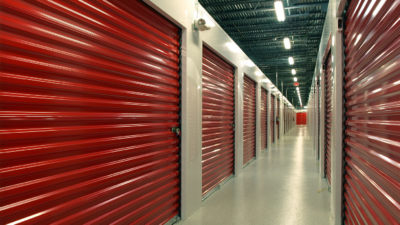For most business leaders, the thought of locking yourself into a 10-year lease, 7-year lease or even 5-year lease can be daunting, and rightly so. Many businesses find it challenging to forecast where they’ll be in three years’ time, so determining your industrial spatial needs over the long-term can be difficult, particularly with advancements in technology and automation continuing at a rapid rate.
It’s not uncommon to hear of tenants who have encountered a shift in spatial demand well before their lease is due to expire, whether that means running out of space or having too much space. For contract reliant businesses, such as third-party logistics providers (3PL), landing or losing a contract can mean a significant shift in the amount of space required. The same can be said for industries projected to experience exponential growth in the coming years, such as e-commerce. Companies like Deloitte Access Economics has forecasted that Australia’s share of online retail sales has the potential to increase three-fold to $37.8 billion in 2025 — all of which will place a huge strain on e-commerce businesses.
Given that shifts in spatial demand are not uncommon, what are your options if your facility no longer meets the needs of your business and there are still several years left on your lease? Here are five options to consider:
-
Move with your existing landlord into a purpose-built facility
Most major landlords will relish the opportunity to move you elsewhere within their portfolio, taking the view that if your business is growing, their portfolio is too. If they have no existing options available, but have access to developable land, some landlords will build tenants a purpose-built facility, providing a market incentive and absorbing any existing lease tail or make good concessions to prevent you taking your requirement to the broader market. In our experience as occupier representatives, it is critical to run a market process to provide our clients with alternative options and create greater leverage with your existing landlord.
Tenants should allow 18 to 24 months for to execute the market process and secure a new purpose-built facility, so building this timeout from your lease expiration is important.
-
Design & negotiate with expansion in mind
For businesses that have outgrown their previous facility and are still projecting strong growth, having the ability to call on expansion space, when needed, is beneficial. Often developers will use a partial pre-commitment to speculatively build the balance of the facility, as it’s cheaper to build a facility all at once.
This option can provide a good opportunity to negotiate with the developer on one of the following:
- A first and/or last right of refusal over the expansion space or;
- A rent-free period over the expansion space until a predetermined future date, after which you will commence paying rent
Similarly, if the developer doesn’t build the facility all at once, the tenant may be able to negotiate a ‘land rent’ over the expansion land, allowing the tenant to commence construction on the expansion space when it is required. A good example of this was the staged delivery of GMK Logistics new facility in Sydney, Australia at Smeaton Grange with Vaughan Constructions.
-
Sublease existing premises and source a new facility to meet your growing demands
Tenants who don’t want to stay with their current landlord will most likely need to consider a sublease of their existing premises. This means running a market process for a new facility — either purpose-built or existing — that will drive competition and create an opportunity to negotiate a more favorable deal than the existing premise. In particular, the Australian cities of Sydney and Brisbane currently offer tenants very attractive pre-lease opportunities as developers compete to build-out their estates and grow funds under management.
In our experience, tenants and occupiers should allow three to six months to backfill their current facility. However, some lease agreements will require the head lessee to maintain their bank guarantee to sublease, so be sure to seek expert advice when undertaking any sublease negotiations.
-
For tenants with too much space, consider subleasing space
Tenants who find themselves with excess space have limited options, but subleasing space is a certain way to reduce exposure. With vacancy levels at an all-time low and the continual shift in businesses spatial demand, we have witnessed a growing demand for flexible short-term leasing opportunities over the past 18 months. Seasonal businesses such as Chrisco Hampers or fresh produce growers always require flexible leasing opportunities. In today’s tightly held market, these types of businesses are often ‘price takers’, as they have limited options to get them through the peak season.
Unforeseen business disruptions also provide an opportunity to sublease space. Perhaps the best example of this was during the 2011 Brisbane floods in Australia, where there was a run of short-term lease activity to help businesses get back on their feet.
-
Consider a short-term option to ride out the lease
While limited, there are still short-term options available. These can be difficult to find but anomalies in certain markets can create short-term opportunities.
Take Sydney, Australia for example. The re-zoning of industrial land for high-rise apartment living has seen key industrial sites being purchased for redevelopment. However, with the cooling residential market, many of these projects have been shelved until the next cycle — typically seven to eight years — resulting in short-term leasing opportunities. Be mindful, however, as the level of service from these landlords can be inferior in terms of general maintenance and the facilities overall presentation.
If your business foresees a shift in spatial demand before the end of your lease term or if you’re considering a new purpose-built facility, now is a great time to assess your future spatial needs as many markets are experiencing tenant favorable conditions.
Nick is a National Director within the Industrial Occupier Services/Corporate Solutions business within Australia and works closely with businesses requiring industrial space to source and secure the most suitable site and facility for their organizational needs.

 Colliers Insights Team
Colliers Insights Team
 Craig Hurvitz
Craig Hurvitz
 Aaron Jodka
Aaron Jodka